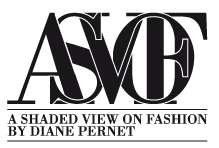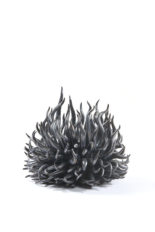Dear Shaded Viewers,
About 8 or 9 years ago Andrew Paulson contacted me out of the blue to ask if I would be interested in writing my autobiography. I hesitated remembering that it took me about 3 years to write 3 pages ages ago when Sabina Ciofi, at that time Editor in Chief of Sport and Street, had encouraged me to do the same. It seems that Sean Dougall had pointed out my blog to Andrew who at that time was working for a publishing company as a literary agent. Time went on we met in Paris in 2012 and again in Florence I think it was during a design week. I’ve followed their work since the beginning and am totally enchanted and wanted to share it with you, more important than how we met is how did Andrew Paulson meet his partner Sean Dougall and what was the genesis of Dougall Paulson.
How did the two of you meet?
We worked next door to each other in Venice Beach. This was before all the apps that tell you how close you are to the new love of your life, so we had to rely on old-fashioned, awkward waves and hellos.
When did you each decide to leave your previous professions, Sean as a production designer and you as a literary agent and take the plunge to create textiles?
It didn’t happen all at once. Sean had a sculpture practice, and I always wanted to try my hand at a craft. I’ve been dreaming of a life in textiles since sometime around 2002. That year, I went to a poetry reading at an event space in midtown Manhattan, and I accidentally crashed a conference for textile-industry professionals that was being held in the same space. I had never seen such chic people; they were so beautiful and polished and expensive-looking, and the textiles they were presenting were so intricate and overwhelming. Textiles seemed like such a funny, random thing to be part of. The idea of textiles stuck with me for the next decade or so. Watching Sean throw a pot is so thrilling, and I was both inspired by and envious of his practice. Wanting to study my own craft, I thought back to those chic textile people, and I knew that weaving was for me without ever trying it. Sean and I bought our first loom, and my curiosity became our curiosity, and we ingested as much knowledge as we could. That was ten years ago, and we still study the craft with the same beginner’s mind and intensity. And watching Sean throw a pot is still just as captivating.
I was always aware of the textiles and a few objects but I don’t remember any furniture until recently when I’ve followed what you’ve been posting on Instagram. Did all the textiles and the furniture start at the same time?
When we started out, we really did set our sights on furniture, lighting, and objects. You never know what people are going to connect with. In a perfect world, you dream up a collection and put your heart and soul into it, and—without getting too hung up on feedback or results—you do hope people connect with something that you’ve made. We included a number of art textiles as part of our debut collection, one of which became our first sale as a studio. Our weaving practice is a big part of who we are and what we do, but furniture, lighting, and objects have always been at the heart of our studio practice.
Your use of gold is otherworldly, it makes me feel like I’ve arrived in paradise. What is your fascination with gold, copper and steel.
Yes, we love gold, and we use it very often in our work. It feels so celestial to us, and the heavens are a constant source of inspiration. Metal is very much like living life; as a material, it’s in this constant state of trying to return to its original state, which means that you’re always negotiating with it, asking nicely if it will please do what you want it to do. Sometimes it agrees, and sometimes it refuses, and unless you want your finished piece to be a tortured mess, you learn to be gentle and not force it to your will. You often hear about “masters” of this craft or that craft, but it’s all a misunderstanding or misnomer. To practice a craft is to be a negotiator; you never really master your medium at all, you just learn how to have a mostly pleasant conversation with it. This is the best you can hope for, and that’s just fine.
How did your collaboration with Chanel come about?
We like to pretend that the spirit of Coco Chanel tapped Peter Marino on the shoulder and then pointed in our direction. In truth, though, we’d spoken to several designers at Mr. Marino’s firm in New York and created a suite of woven samples over many months—which we thought had disappeared into their archives forever, never to be seen again. Eventually, one of those designers circled back with a first project: six, 4-meter-tall screens that flank a fireplace in the fine jewelry department of the Beijing flagship. The whole process of initial conversation to finished installation took several years. Everything is patience, then bringing forth.
There is something extremely sexy about your chairs and bar stools, maybe the sexiest chairs I’ve seen and the table with the slender legs, what was your dream when you designed them?
We like for our design to inhabit places in between. Often we find inspiration in the places of the universe that are most off the map, like the bottom of the sea or the farthest stretches of outer space. We’ve never been to these places, and no one else has, either, which means they’re places of wonder and fantasy. We want all our work to be positioned somewhere in between those far reaches, gestural forms that evoke the lines and energy of the deep sea while elevating your spirit closer to the stars.
When you are weaving the textiles is it a form of meditation to you?
Weaving is very rhythmic—back and forth, back and forth. Sometimes it can be really energetic and exhilarating, but very often it’s tedious work. Don’t you think that meditation can also have this same sort of tedious quality? It’s hard work to sit on a cushion and face your neuroses with an open heart—it seems like an unnerving thing to want to do in the first place—just as it’s hard work to sit at the loom and focus a whole day on creating 25 centimeters of weaving. The trick is to empty yourself of useless thoughts and emotions, all your preconceived ideas, all your troubles and your demons. It’s a very difficult practice, especially if you don’t stop and consider it, and it rarely works consistently. You have to find and then push your way through this gate of emptiness, and then you can weave. What’s more, you have to find that gate with a fresh heart every day.
How do you work together do you both do the same things?
As with anything, we work side by side as work dictates. Sometimes one of us casts glass while the other sculpts ceramic forms. Sometimes we sit at looms together and weave. Our practice doesn’t really force us into silos or departments. Isn’t that nice? It’s so good that every day is different, not predictable or repetitious. Sometimes we have to do the same thing over and over again, which can be tedious, but that kind of work never lasts long. It seems like a very sane way to approach the idea of making work for a living.
Is there a sofa coming up next?
We would love to do a sofa! It’s gratifying to see someone interacting with a piece that we’ve designed, and a sofa would be especially so. Is it the same for fashion designers? It seems like it would be wonderful for someone to choose, wear, and feel beautiful in your garment. Sofas are extra special, since they’re places of refuge and relaxation, a place to feel your full body weight be accepted, as well as feel comfort and solace. At the moment, we’re putting a lot of energy into a new lighting collection that incorporates weavings, sculptural cast bronze elements, and lighting, of course. It’s really exciting.
That Gamma Ray Sconce feels so Brancusi like…did he ever enter into your mind when you were designing?
It’s hard to say that Brancusi came to mind particularly. We love Brancusi’s work, of course, and we love “Bird in Space” especially, in the way that it captures movement so beautifully without relying on anything representational, like wings or a beak or feathers. For us, Gamma Ray came from a place of wanting to capture the energy of gamma ray bursts in outer space–the deadliest electromagnetic phenomena in the universe. We wanted the piece to have this same spirit, equal parts dangerous and beautiful.
All of your materials are noble, how do you work with bronze and what is under the lacquer?
We love the notion of “noble” materials. You could say it comes from the idea of something that’s “knowable,” no? Something recognizable and extra and special. Bronze and other materials that are objectively expensive to work with are really more elevated for a reason; simply put, they’re beautiful to work with, and they have lots of versatility when it comes to their final expression. Our bronzes always start with a unique sculpture that we create in the studio, which we then take to the foundry. We work very closely with the foundry to create a bronze casting, which takes a lot of hands-on work and careful finishing to create a resolved object. As for our lacquered work, this is usually realized using hand-carved oak. Again, for these pieces, we create a positive—whether full-scale or a scaled model—and these are studied and then carved in wood. We work with a team of brilliant finishers who prepare the wood pieces to receive our specially pigmented lacquers.
Any dreams for the future? Or, are you more living each day as it arrives?
We learn from where we’ve been, we’re inspired by what’s to come. We try not to get hung up on either direction, which distracts from the now. It’s easy to lay a trip on what you’re experiencing right now. It can really get in the way of everything.
Your thoughts on the sun and the moon? What is the view like outside your windows? Can you see the sunrise and sunset like you bring out in the textiles?
Without exception, what we create considers light first and foremost. Does it reflect? Does it absorb? How can we convince it to do one more than the other? Often, we’ll drag our materials outside and stare at them under the sunlight. We have beautiful sunlight here in Southern California. It moves sideways. Isn’t that amazing? Blacks look so nuanced, and so do metallics. You never know what to expect, and that’s exciting. Sometimes the materials we take outside have an iridescence or some other quality that we never would have seen if not under our sunlight. Sometimes we finish a weaving and pull it from the loom and we look at where the moon is on its journey across the sky. We have a series of weavings called “Moontide” that takes all this into consideration. From that series, “Virgo Moon” questions perfectionism and rigor, and “Harvest Moon” interrogates ideas of abundance and gratitude. The moon punctuates our daily rhythm, and we’re very aware of its phases and movement. For us, waning moons are time for meditation and reflection; waxing moons are time for creativity and energetic work. We try to cast our spells accordingly.
Later,
Diane













